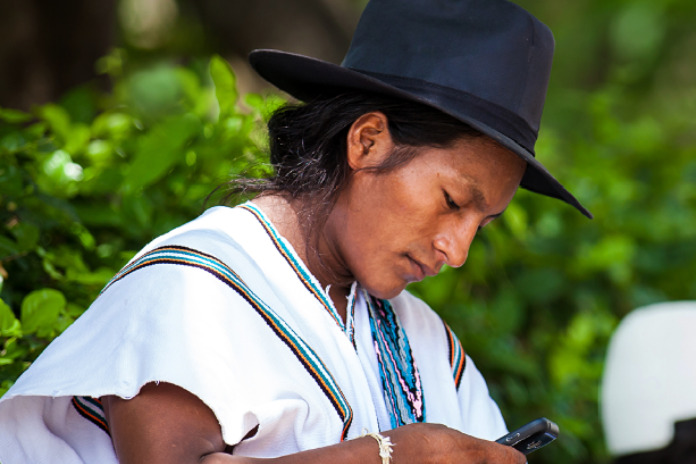WASHINGTON, USA – At least 77 million rural inhabitants in Latin America and the Caribbean are unable to access internet services that satisfy minimal quality standards, according to the study “Rural Connectivity in Latin America and the Caribbean – a Bridge to Sustainable Development During a Pandemic ”, which was presented on Thursday by the Inter-American Institute for Cooperation on Agriculture (IICA), the Inter-American Development Bank (IDB) and Microsoft.
The study, which focused on 24 Latin American and Caribbean countries, provides a comprehensive overview of the status of rural connectivity in the region, revealing that 71 percent of the urban population in Latin America and the Caribbean have connectivity options, in comparison to only 37 percent of their counterparts in rural areas, which is a 34 percentage-point gap that undermines the immense social, economic and production potential of the latter.
In total, 32 percent of the Latin American and Caribbean population, that is 244 million people, have no internet access.
The connectivity gap is more pronounced when one compares urban and rural communities, sometimes amounting to a 40 percentage-point gap. Of the total amount of individuals with no internet access, 46 million live in rural areas.
The research identified major limitations in the availability of official statistics, which made it difficult to provide a more accurate assessment of the true level of connectivity in rural areas of the Americas. Only 50 percent of countries in the region have a precise measurement of the level of rural connectivity.
In order to compensate for these deficiencies, IICA, IDB and Microsoft developed an index to measure the quality of rural connectivity.
For purposes of the study, the researchers developed the Substantial Rural Connectivity Index (SRCi) and the Substantial Urban Connectivity Index (SUCi), enabling them to measure the quality of connectivity, based on the information available in official statistics and in accordance with other existing indices, for example the IDB’s Broadband Development Index; the GSMA (Group Special Mobile Association) Mobile Connectivity Index; and the General Connectivity Index, used by the International Telecommunications Union (ITU).
The estimate enabled the team to characterize the situation in Latin America, by defining three clusters among the 24 countries, all of which have shortcomings in rural connectivity, which have existed for decades.
- High-level significant rural connectivity cluster: This includes The Bahamas, Barbados, Brazil, Chile, Colombia, Costa Rica, and Panama, which together represent 37 percent of the sample rural population.
- Medium-level significant rural connectivity cluster: This includes Argentina, Ecuador, Mexico, Paraguay, Dominican Republic, Trinidad and Tobago and Uruguay, which represent 35 percent of the sample rural population.
- Low significant rural connectivity cluster: This includes Belize, Bolivia, El Salvador, Guatemala, Guyana, Honduras, Jamaica, Nicaragua, Peru, and Venezuela, which represent approximately 28 percent of the sample rural population.
The research found that the most significant shortcoming in terms of connectivity was low internet frequency, with only 10 percent of the rural population on average (or 21 percent if Brazil is excluded) who use the internet daily. Following that in importance was the limited availability of broadband, with an average of 16.6 percent of the rural population able to access this service.
Manuel Otero, the director-general of IICA, explained that “We have set ourselves a very ambitious goal: to reposition rural areas as regions that have tremendous potential to become areas of progress and prosperity, which is something that will necessitate production linkages enabled by access to adequate levels of services, technology and connectivity. As a key institution in the agriculture sector, IICA is working with its partners to join efforts with countries and the private sector. Our goal is to drastically reduce the gaps that are hindering development. The rural-urban connectivity gap is an issue that demands the greatest level of attention”.
“The absence of connectivity is not merely a technological barrier. It also represents a barrier to health, education, social services, work and the overall economy”, argued Marcelo Carbrol, social sector manager at the IDB. “If we do not bridge this gap, the divide will continue to expand, and we will allow a region that is already the most inequitable in the world to become even more inequitable”.
Luciano Braverman, director of education at Microsoft Latin America indicated that: “At Microsoft, we know that connectivity provides a population with many opportunities to work and generate income, to acquire the knowledge and information that facilitates this work, as well as to access telemedicine health services and online educational content. It is particularly important that we stress the positive and extensive social and production impact that full connectivity will provide to rural areas. For this reason, we are prioritizing our efforts to bring connectivity to rural areas in Latin America and the Caribbean”.
Data cited in the study indicates that a 1 percent increase in fixed broadband penetration would result in a 0.08 percent increase in GDP, whereas a 1 percent increase in mobile broadband penetration would produce a 0.15 percent increase in GDP.
Moreover, with respect to processes of digitalization, it is estimated that a 1 percent increase in the Digital Ecosystem Development Index would create a 0.13 percent increase in the per capita GDP, with consequent positive repercussions on productivity.
Sandra Ziegler, the IICA researcher who led the study, explained that: “We conducted numerous interviews and 39 key sources from the private and public sectors gave us data to establish an accurate picture of the connectivity situation in the region, at a time when the spread of COVID-19 is exacerbating the marginalization of almost one-third of the Latin American and Caribbean population in terms of internet use”.





